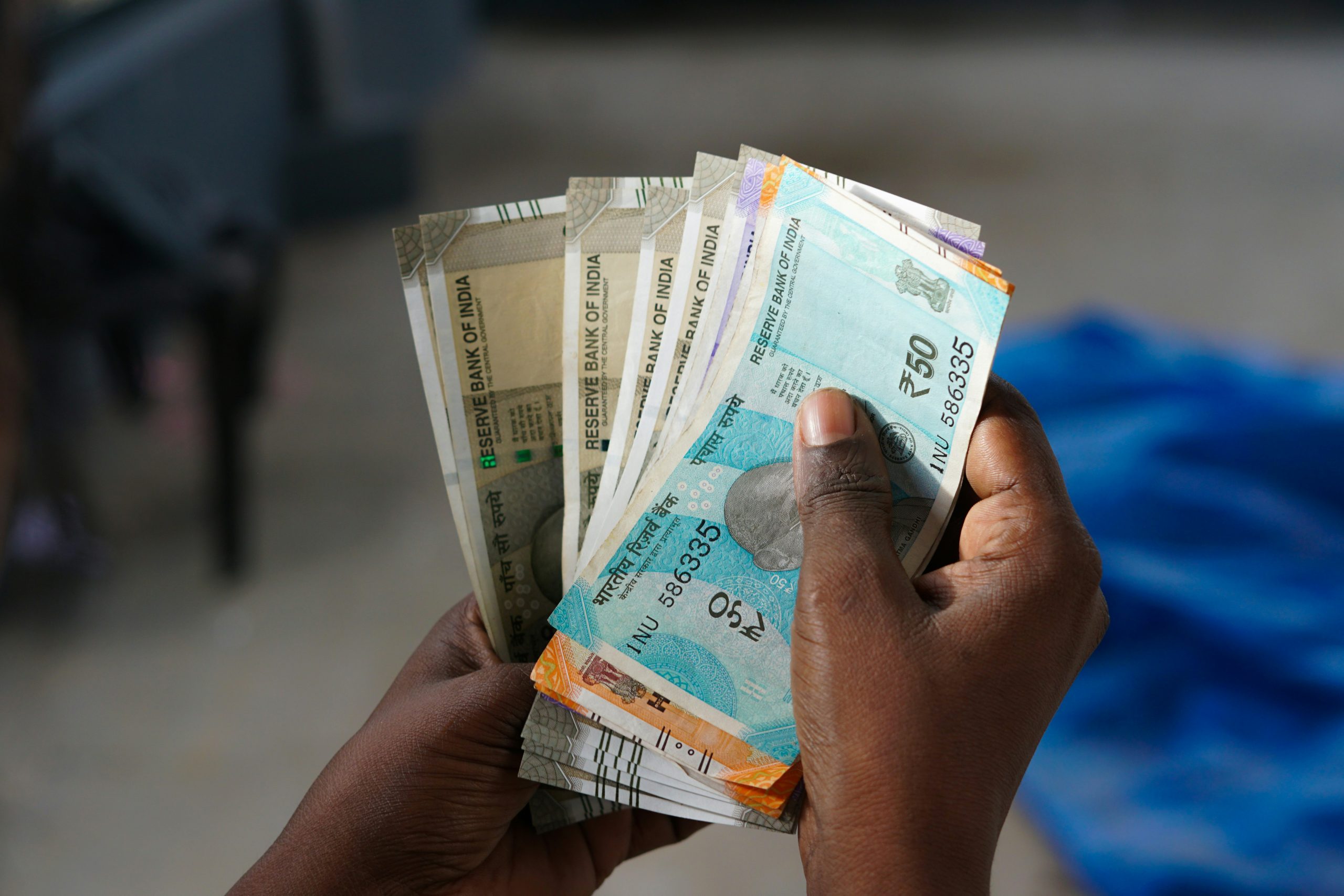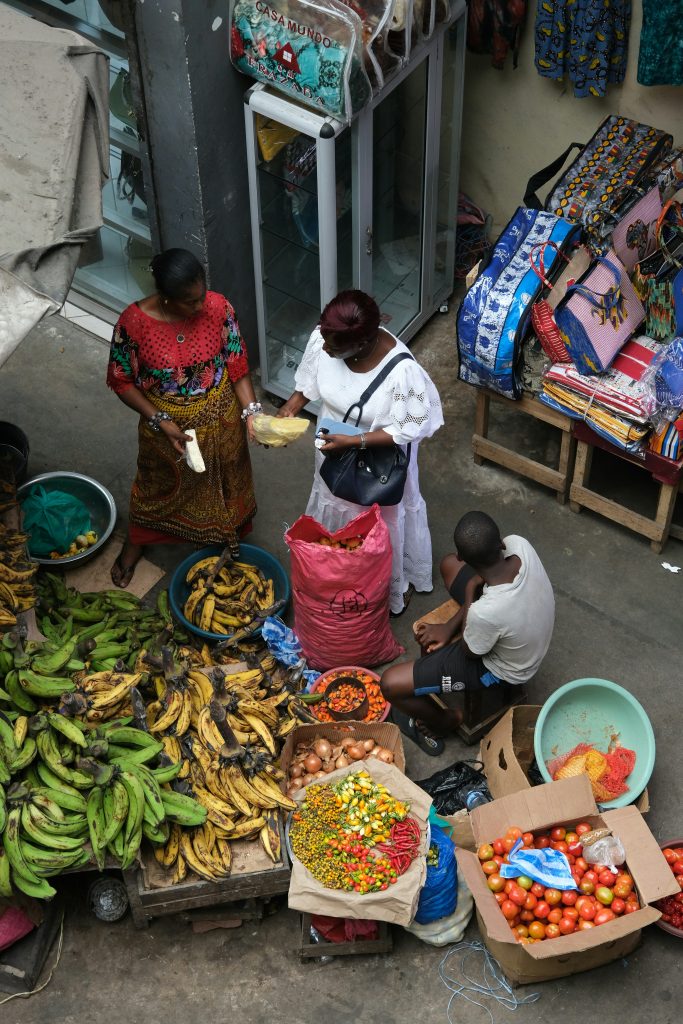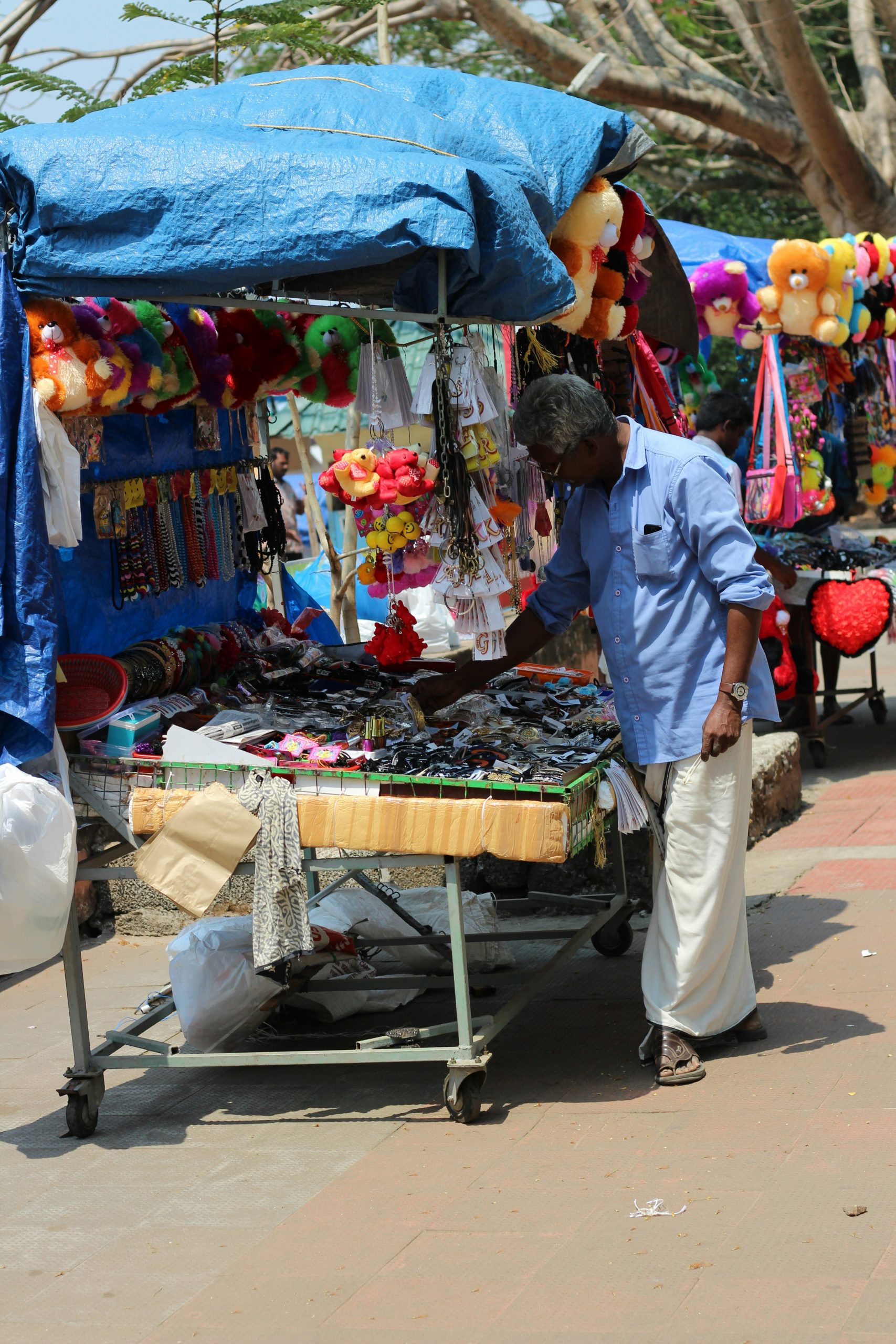By Annabel Ludhra, Director & Editor-in-Chief of London Geopolitical Review CIC
The Failures of Neoliberal Economics in Africa
How the ideals of privatisation, free trade and globalisation are not the beacon of hope to African states like Ghana and Zambia, but maybe another nail in the coffin.

Neoliberal economics promotes the practice of a free market through privatisation, free trade and globalisation as a means of fostering economic growth through the interconnectedness of goods, services and capital. Neoliberalism enforces these economic practices through Structural Adjustment Programmes initiated under International Finance Institutions like the IMF and World Bank. This essay first draws upon the neoliberal practices initiated in Ghana and Zambia to recognise the failings of neoliberalism in stimulating economic growth in developing African countries. This essay highlights the ineffectiveness of privatisation, the stagnating effects of free trade, and the short-term focus of SAPs. This essay finally situates neoliberalism within neocolonial power dynamics, concluding that it cannot foster sustainable growth in newly independent, developing states.
Privatisation
Let us entertain the neoliberal defence of privatisation for a moment. Friedman posits that public enterprise and state intervention through marketing boards and SOEs are inefficient.¹ Neoliberals call for the privatisation of public enterprises to reduce controls on capital movements, suppressing state regulations of economic activity.² This financial reform of corporate privatisation aims to promote profit-driven efficiency,³ by transferring ownership from SOEs to private enterprises, diversifying ownership to increase capital flow.⁴
Whilst privatisation seeks to improve economic efficiency by removing unproductive enterprises, it overlooks the structural complexities of postcolonial African states, rendering neoliberalism incapable of driving economic growth. In the developing South, privatisation ironically depends on strong institutional and regulatory frameworks,⁵ that Ghana and Zambia lack. Both bear the colonial cross of administrative indirect rule,⁶ Zambia since 1924, and Ghana since the late 19th Century.⁷ This left them with weak legal frameworks which lacked clarity and formalisation,⁸ a colonial-imposed ‘decentralised despotism’ as Lange observes.⁶
In Ghana, the SOE reform agenda entailed a privatisation agenda of divestiture and liberalisation to transfer assets to the private sector and increase competition.⁹ Whilst Ghana’s privatisation programme generated revenues to about 14% of GDP for the government between 1987 and 1999, the overall ‘net direct revenues’ gained were insignificant.¹⁰ Let us look at the 2016 privatisation of the Komenda Sugar Factory in 2016 which failed due to non-existent agricultural support systems and weak legal oversight due to the government’s lack of public investment in agriculture.¹¹ Privatisation relies on strong regulatory frameworks in property rights which ironically undermines the neoliberal logic of private owners reducing transaction costs for economic growth.
Like Ghana, Zambia’s 1990s–2000s copper mine privatisations makes it increasingly clear that neoliberal policies within a postcolonial, developing context, are ineffective. Let us first highlight the main privatisation projects taken by Zambia during this time: the Privatisation Act of 1992, and the Investment Act and Mines and Minerals Act of 1995.¹² Whilst the privatisation of mining companies Konkola Copper Mines and First Quantum Minerals earned over $600 million between 2003–2006, due to inadequate ownership rights regulation, only $71 million reached the treasury.¹² Lacking a coherent property rights framework, Zambia saw little reinvestment of capital. As Williams notes, neoliberalism’s problematic naturalisation of the ‘homo oeconomicus’ ignores the need for state intervention to build institutional capacity.¹³ In both Ghana and Zambia, privatisation failed because of weak colonial-era structures which undermine the very frameworks it requires, making neoliberalism a barrier to, rather than a driver, of development.
Free Trade
Neoliberals advocate for free markets through trade liberalisation to boost competition, ultimately, they do anything but. Free trade leads to an economic collapse of infant industries in developing countries. As Opoku writes, international trade enforces currency devaluation, intended to promote exports, however, this exposes local manufacturers to unnecessary competition which leads to the inevitable collapse of local industries.¹⁴ In Ghana, the currency devaluation led to the Bank of Ghana requiring businesses bidding for foreign exchange to deposit 100% of the Cedi value of their auction bids – locking up capital.¹⁴ As a result, the Cedi’s rapid decline made it difficult for businesses to repay their loans, rendering businesses vulnerable to closure.¹⁵ Between 1995 and 1999, over 470 firms collapsed each year.¹⁶ The clear lack of protection offered to infant industries under neoliberal free trade policies breeds economic stagnation in domestic developing economies which rely heavily on local businesses.
Free trade destroys local economic drivers, undermining economic growth in developing countries. This is made clear through opening up of Zambia’s copper mines to the global economy, which rendered it a victim to fluctuations in world copper prices.¹⁷ By 1982, Zambia was exporting four times more copper to import the same amount of goods as in 1970, reinforcing the unpredictability of free trade for developing African countries. Despite adopting the Foreign Exchange Auction System in 1985 to streamline the allocation of foreign exchange to enhance efficiency, Zambia’s economy was unable to recover from the fluctuations of foreign exchange value, resulting in local mining companies selling products at a loss as it could not raise the value of its Kwacha.¹⁸ Polanyi’s ‘free market fatigue’ rightly observes how neoliberal trading policies in developing countries, as seen in Ghana and Zambia, do not stimulate economic competition, but rather destroy domestic economies.¹⁹ The practice of free trade undermines infant industries, whilst also opening up already vulnerable economies to further trading vulnerabilities, rendering neoliberalism incapable of leading to economic growth within developing countries.
Neoliberalism perpetuates, rather than resolves, regional economic disparities. In Ghana and Zambia, FDIs under free trade reveal clear limitations to the ‘invisible hand’ of the self-organised market.²⁰ From 2001 to 2015, Ghana’s Investments Promotion Centre registered 3941 projects with FDI components, estimated at $36.90 billion.²¹ However, whilst FDIs should reduce transport costs and infrastructure development to generate economic growth, the capital generated from FDIs is not circulated uniformly. Investment was concentrated in Greater Accra (72.86% of projects), and Ashanti, bypassing poorer northern regions.²² Macroeconomic financial liberalisation has exacerbated spatial economic inequality, rather than equalising growth. This bleeds into Zambia’s FDI investments. Despite Zambia engaging in more extensive neoliberal reforms, it shows similar patterns: over 80% of FDIs target mining,²³ including a $1.1 billion investment in Mopani Copper Mines by UAE investors.²⁴ Both Zambia and Ghana are the victims of FDI-induced spatial inequality, calling into question the effectiveness of neoliberal FDIs under the free market in leading to economic growth in developing countries.
Ultimately, neoliberalism entrenches economic subordination in developing countries through asymmetric globalisation. The neoliberal policy of globalisation is intended to integrate countries through developing linkages of economic openness. Under this, corporations are able to have free movement of finance across national boundaries.²⁵ However, this is an ideal. Globalisation reinforces inequalities between the West and Global South.²⁶ Whilst there is evidence to see how globalisation under free trade has led to economic growth in East Asia during the 1970s, particularly with the prioritisation of an export-oriented regime in South Korea or China,⁴ it is a gross generalisation to assume that neoliberalism would therefore be effective at generating economic growth in the global South. Developing countries are forced into low-value raw material exportation via import substitution in international markets. Ghana’s dependence on cocoa and gold has kept it an ‘agrarian state’, unable to become an ‘industrial country’ like South Korea.²⁷ Ghana’s imports declined over 33% in the 1980s, cutting savings and investments to near zero and driving inflation above 100%.²⁸ Such dependence locks newly independent African states into economic stagnation rather than industrial growth.
There is an evident ‘resource curse’ seen when applying neoliberalism to developing countries.²⁹ Zambia, despite being highly endowed in natural resources, is a victim of import substitution under neoliberal globalisation.³⁰ Zambia has an abundance of copper, yet the opening up of Zambia’s corporations to the global economy has flooded the market with cheaper imports, making locally manufactured goods uncompetitive.¹⁸ In essence, both like the sectoral concentration of low-value commodities in Ghana, Zambia’s prioritisation of copper through mining renders the country’s mining economy vulnerable to global shock prices, as seen with the decline in value of copper after the US tariff imposition in April 2025.³¹ Neoliberalism’s free trade policies are incapable of being effectively applied to developing countries in Africa, not only hindering their economic growth through forcing them into import substitution mechanisms which lacks economic diversification, but further entrenches economic inequality between the industrialised West and East, to the ‘agrarian’ global South.
Structural Adjustment Programmes and Economic Dependence
SAPs provide packages of aid and advice to developing countries to help solve macroeconomic problems through transforming their economies under a neoliberal framework. Ironically however, the SAPs offered by the IMF and World Bank prioritise short-term economic development which renders them incapable at ensuring sustained economic growth for developing countries.¹⁷ Policies like currency devaluation are intended to boost exports, yet in Zambia and Ghana, these prove ineffective. In Zambia, the devaluation of the Kwacha saw an inflation in commodity prices,³² leading to the government removing subsidies on staples like maize, triggering a recession in communities like the Kawama Compound.¹⁷ Rather than easing debt, SAPs reinforced economic dependence. By May 1989, Zambia’s debt exceeded $5 billion, with interest consuming 40% of the 1986 budget.¹⁷ Zambia’s economy was stunted significantly due to the dramatic devaluation of currency imposed by the IMF, which made debt service payments much harder to achieve.
The neoliberal promotion of SAPs are structurally inefficient, as evidenced through their failures of stimulating economic growth, not only in Zambia, but also in Ghana. The Provisional National Defence Council of Ghana entered a series of SAPs from 1983–2000s in an attempt to transform its economy from its previous developmental state model.¹⁹ Whilst under these SAPs, Ghana’s growth of GDP averaged almost 5% from 1984–2001, alongside a decline in inflation from 122% to 21.3% from 1983–2001.³³ However, this was only short-term growth and thus cannot provide an adequate defence of neoliberal practices of economic growth. Ghana’s external debt rose from almost 1.9 billion USD to over 6 billion by 2001.³³ Ultimately, the structural adjustment ambitions of neoliberalism cannot sustain long-term growth within developing countries as their emphasis on devaluation and privatisation, ironically, curb developing countries and perpetuate debt.
Not only do neoliberal policies ignore the structural architectures of developing countries, they are embedded in global power hierarchies. When situating IFIs like the World Bank and IMF within a postcolonial narrative, it becomes increasingly clear to see how these ‘independent central banks’ are merely political instruments to the economic hegemony of the West.³⁴ Their policies dispossess sovereignty as the foreign core capital insinuates itself into the periphery countries’ capitalist ownership structure.³⁴ This begs the question: are neoliberal policies of economic growth a reflection of the neocolonial? Zambia and Ghana are victims of extreme debt repayments, capital flight, and volatile FDIs, trapping developing countries in dependence. Aid from IFIs are conditional upon privatisation, export promotion and trade liberalisation, deepening debt distress. Ghana joined the HIPC initiative in 2001 to receive debt relief to meet its neoliberal conditions.³⁵ Similarly, when Zambia cancelled the IMF Agreement in 1983, replacing it with INERP, Zambia failed to reach sustainable economic growth as the IMF denied financial resources to the government.¹⁸ Doing so ironically delayed the privatisation of mines, undermining the neoliberal policies SAPs aimed to protect. Ultimately, SAPs and IFI-promoted reforms perpetuate neocolonial control, rather than economic partnership and development.
The idea that neoliberalism can lead to economic growth, particularly within developing countries, is an ideal. Through an analysis of its main policies: privatisation, free trade, and SAPs in this essay, it becomes increasingly clear that its defence, as promoted by Smith and Evans,³⁶ are invalid. The efficiency of a privatised market cannot be effectively applied to postcolonial African states. When observing the colonial legacy in Zambia and Ghana’s institutions, it is clear that developing countries lack the regulatory framework necessary to ensure the effective flow of goods. Free trade and macroeconomic policies encouraging economic competition not only destroy local economic drivers, but FDIs directly perpetuate regional economic inequality. Globalisation and free trade entrench a resource curse for developing countries, forcing them into import-substitution which inevitably reduces their profit from exports. In essence, neoliberalism perpetuates a symbiotic cycle where developing countries are dependent on the aid and relief provided by IFIs. The stringency of conditionality perpetuates a monetarist approach to economic development, undermining the nuanced infrastructural characteristics of newly independent countries in the global South. Ultimately, when examining the financial destruction of Ghana and Zambia through liberalisation, it becomes clear that neoliberalism cannot lead to economic growth, particularly within developing countries.

Bibliography
- Friedman, M. (1970). A Theoretical Framework for Monetary Analysis. Journal of Political Economy, 78(2), pp.193–238. https://www.jstor.org/stable/1830684
- Evans, P. and Sewell, W.H. (2013). The Neoliberal Era: Ideology, Policy, and Social Effects. Social Resilience in the Neoliberal Era, pp.35–68.
- Kirman, A. (1998). [as cited in essay, no separate ref listed].
- Biersteker, T.J. (1995). The ‘Triumph’ of Liberal Economic Ideas in the Developing World. pp.174–196.
- Josiah, J., Burton, B., Gallhofer, S. and Haslam, J. (2010). Accounting for Privatisation in Africa? Reflections from a Critical Interdisciplinary Perspective. Critical Perspectives on Accounting, 21(5), pp.374–389. https://doi.org/10.1016/j.cpa.2009.09.002
- Lange, M. and Rueschemeyer, D. (2005). States and Development: Historical Antecedents of Stagnation and Advance. Palgrave Macmillan, pp.117–139.
- Frederiksen, T. (2014). Authorizing the ‘natives’: Governmentality, dispossession, and the Contradictions of Rule in Colonial Zambia. Annals of the Association of American Geographers, 104(6), pp.1273–1290.
- Gocking, R.S. (1994). Indirect Rule in the Gold Coast. Canadian Journal of African Studies, 28(3), pp.421–446. https://doi.org/10.2307/485340
- Appiah-Kubi, K. (2001). State-owned Enterprises and Privatisation in Ghana. The Journal of Modern African Studies, 39(2), pp.197–229. https://doi.org/10.1017/s0022278x01003597
- Akomea-Frimpong, I. and Temitayo Olumide, O. (2019). Assessing the Effects of Privatization on State Enterprises in Ghana. Research Journal of Finance and Accounting, 8(10), pp.139–148.
- Modern Ghana (2025). Abandoned Komenda Sugar Factory Requires Urgent Attention. Available at: https://www.modernghana.com/news/1373836/abandoned-komenda-sugar-factory-requires-urgent.html
- Simutanyi, N. (2008). Copper Mining in Zambia: the Developmental Legacy of Privatisation. Institute for Security Studies Papers 165, pp.1–16.
- Williams, D. (1999). Constructing the Economic Space: the World Bank and the Making of Homo Oeconomicus. Millennium: Journal of International Studies, 28(1), pp.79–99. https://doi.org/10.1177/03058298990280011001
- Opoku, D.K. (2010). From a ‘Success’ Story to a Highly Indebted Poor Country: Ghana and Neoliberal Reforms. Journal of Contemporary African Studies, 28(2), pp.155–175.
- Kraus, J. (2002). Capital, Power and Business Associations in the African Political Economy: a Tale of Two Countries, Ghana and Nigeria. The Journal of Modern African Studies, 40(3), pp.395–436.
- CEPA (2000). Ghana Macroeconomic Review and Programme. Centre for Policy Analysis.
- Clark, J. and Allison, C. (1989). Zambia Debt and Poverty. Oxfam.
- Simutanyi, N. (1996). The Politics of Structural Adjustment in Zambia. Third World Quarterly, 17(4), pp.825–839.
- Langan, M. (2023). The Double Movement in Africa: a Nkrumah-Polanyi Analysis of Free Market Fatigue in Ghana’s Private Sector. Review of International Political Economy, 30(2), pp.463–486.
- Smith, A. (2012). An Inquiry into the Nature and Causes of the Wealth of Nations. Wordsworth Editions.
- Awanyo, L. and Attua, E.M. (2018). A Paradox of Three Decades of Neoliberal Economic Reforms in Ghana. African Geographical Review, 37(3), pp.173–191.
- Massey, D. (1995). Spatial Divisions of Labour: Social Structures and the Geography of Production. Bloomsbury Publishing.
- Ndaba, S. (2015). The Impact of Foreign Direct Investment on Economic Growth in Zambia. International Institute of Social Studies.
- Banya, N. and Mfula, C. (2023). Abu Dhabi’s IRH to Invest $1.1 Bln in Zambia’s Mopani Copper Mines. Reuters.
- Siddiqui, K. (2012). Developing Countries’ Experience with Neoliberalism and Globalisation. Research in Applied Economics, 4(4). https://doi.org/10.5296/rae.v4i4.2878
- Stiglitz, J.E. (2002). Participation and Development: Perspectives from the Comprehensive Development Paradigm. Review of Development Economics, 6(2), pp.163–182.
- Kleiner, J. (2001). Korea: a Century of Change. World Scientific.
- Konadu-Agyemang, K. (2000). Structural Adjustment Programs and Uneven Development in Africa: the Case of Ghana. The Professional Geographer, 52(3), pp.469–483.
- Ross, M.L. (1999). The Political Economy of the Resource Curse. World Politics, 51(2), pp.297–322.
- Yusof, Z. (2013). Economic Diversification: the Case of Malaysia. Revenue Watch Institute.
- Chen, J. (2025). Gold, Copper Prices Extend Decline amid Tariff Aftershock. MINING.COM. Available at: https://www.mining.com/gold-copper-prices-extend-decline-amid-global-market-turmoil/
- Mphuka, C., Kaonga, O. and Tembo, M. (2017). Economic Growth, Inequality and Poverty: Estimating the Growth Elasticity of Poverty in Zambia, 2006-2015. International Growth Centre.
- Arthur, P. (2002). Ghana: Industrial Development in the Post-SAP Period. Canadian Journal of Development Studies, 23(4), pp.717–742.
- Herrera, R. (2006). The Neoliberal “Rebirth” of Development Economics. Cahiers De La Maison Des Sciences Economiques.
- Ayelazuno, J.A. (2014). Neoliberalism and Growth without Development in Ghana. Journal of Asian and African Studies, 49(1), pp.80–99.
- Thorsen, D.E. (2010). The Neoliberal Challenge: What Is Neoliberalism. Contemporary Readings in Law and Social Justice, 2(2), pp.188–214.


